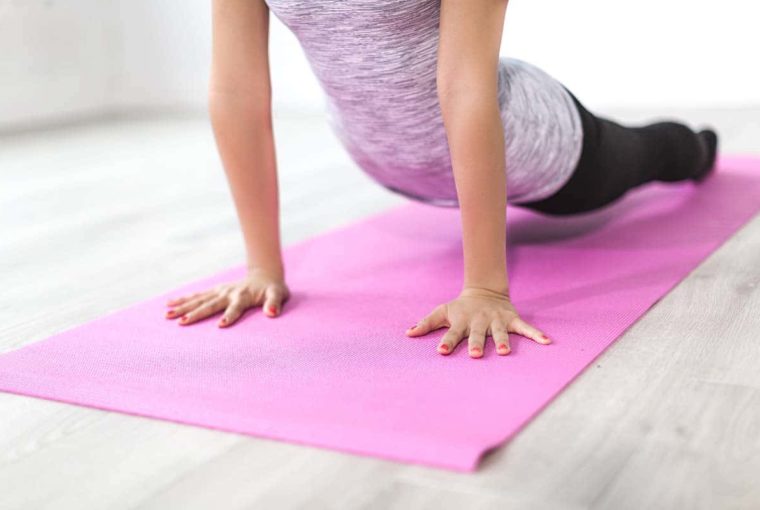With tons of health and fitness trends, Pilates is one of the form of exercises that’s increasing in popularity. It’s a type of exercise that can be performed as a standalone workout routine or alongside other forms of movements. It’s also easy to get started with it at home, making it an appealing exercise for people with hectic schedules.
Whether you’re an exercise beginner or have been working out regularly, you must definitely try out Pilates. It’s a dynamic exercise that will challenge and keep you sweating. Before you start incorporating this exercise into your regimen, you ought to educate yourself further regarding it.
To help you, below is a beginner’s guide in trying Pilates this 2021.
1. Different Types Of Pilates
There are several types of Pilates. Each type has similar methods and variations compared to the others. However, all types are geared toward building strength, flexibility, and core balance.
For beginners, a class with an expert is recommended. This is to guide you in performing the right movements, maintain proper form, and prevent injury. You would have to execute the exercises together with your instructor to make sure you’re doing it correctly. You can only witness the benefits of the exercise if you’re doing the set properly.
There are many Pilates class studio you can visit today. If you’re located within or near the place, Pamela has been teaching Pilates in Philadelphia for over 10 years. They can help you understand and determine the type of Pilates exercise that works best for you.
Over time, as you continue working with a professional, you’ll be able to practice Pilates at home. This is a convenient and easy way to stay consistent with your workout regimen. If you plan to do Pilates entirely indoors, invest in a few sets of devices that can help add resistance and increase your strength.
2. Equipment Used
Commonly, simple Pilates exercises—planks, bicycle crunches, bird dog, abdominal curls, and more—can be done using no equipment. You simply use your own body weight to develop endurance and build stability. However, you need to maintain proper form to work the intended muscle groups and make your workout regimen a success. Also, getting familiar with these exercises is useful, especially if you’re ready to step up your regimen with a few devices.
Apart from your mat, you’ll need resistance bands, foam rollers, dumbbells, and more. This set of fitness equipment can help you add resistance on top of your body weight, making the exercise more challenging. Consequently, this will compel your muscles to cope and become stronger.
Likewise, this set of devices can help you target various muscle groups and mix up your regimen to make the entire experience enjoyable and dynamic. However, you don’t need to purchase these altogether. For your home exercises, you can simply start with your resistance bands. After a while, if you feel like you want to perform other movements using other fitness apparatus, go try other ones.
What’s great is that these fitness devices are easy to carry from your home to your fitness studio. They can also be used not only for Pilates, but for other forms of exercises as well.
Nonetheless, if you prefer to head to the gym, a popular Pilates equipment is the reformer. This bed-like device is outfitted with a sliding carriage, springs, and straps. The reformer can assist you as you perform various muscle toning movements.
When used properly, a reformer platform can enhance your performance as this move more efficiently. It helps you activate the right muscles.
3. Fundamentals Of Pilates
Although Pilates is regarded as a low-impact exercise, you shouldn’t underestimate it. Pilates exercises focuses on increasing intensity in various muscle groups by performing the movements slowly and steadily. It also trains you to concentrate on maintaining proper control, precision, and breath flow.
As you execute one exercise to the next, you’ll learn to effectively train your core, shoulder, arms, back, and pelvis. When done correctly, Pilates can help you activate and utilize all of these muscles as they were primarily designed. All these can help you sculpt your body and feature your toned muscles.
Moreover, as you understand the purpose for each movement, it’ll be easy for you to determine the muscles you ought to activate. This can potentially help you witness and relish the many benefits of the exercise.
4. Benefits Of Pilates
Pilates offers a wide array of benefits. This includes improved balance, posture, coordination, strength, and flexibility. Also, Pilates promotes flat abdominal muscles as nearly each movement concentrates on toning your core muscles. It helps you highlight your abdominal muscles without looking ripped. Hence, if you aim to have a flatter tummy, stronger core, and greater body alignment, you ought to try Pilates.
As mentioned, Pilates can help you increase awareness. Potentially, this can translate to better stress management and improved form. Take note that maintaining proper form is crucial to help prevent injury and activate the right muscle groups.
Final Thoughts
As a beginner, convenience is a crucial factor that can help you stay consistent and motivated with your workouts this year. Gladly, Pilates is a form of exercise that’s doable at home and needless of equipment. It can also offer you a wide scope of benefits that can help you become more confident with your body.




